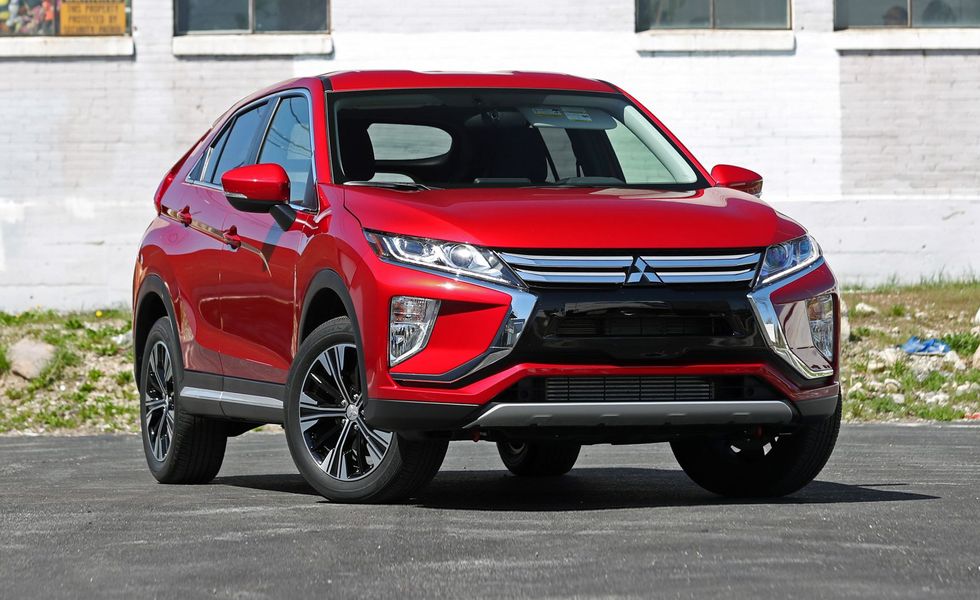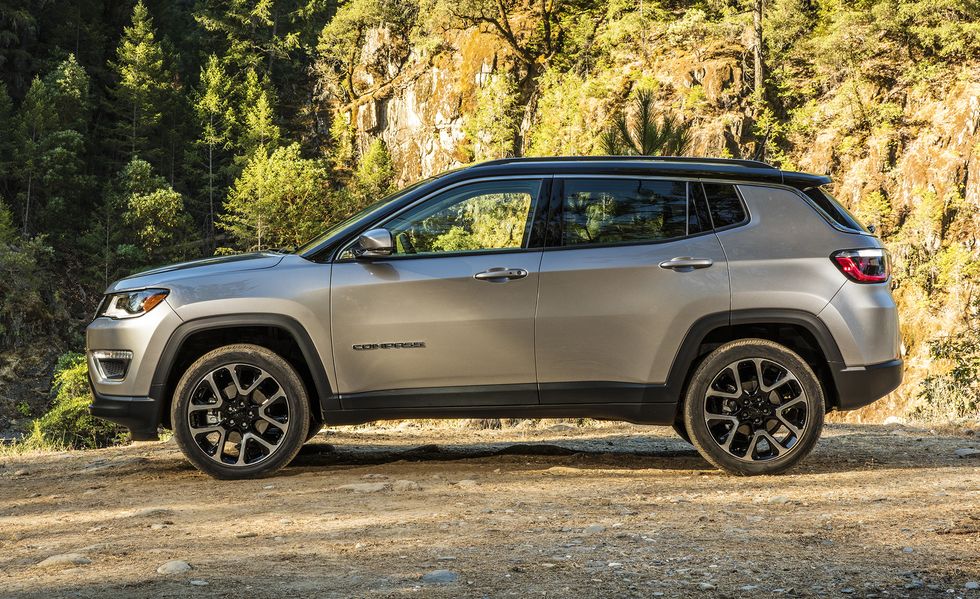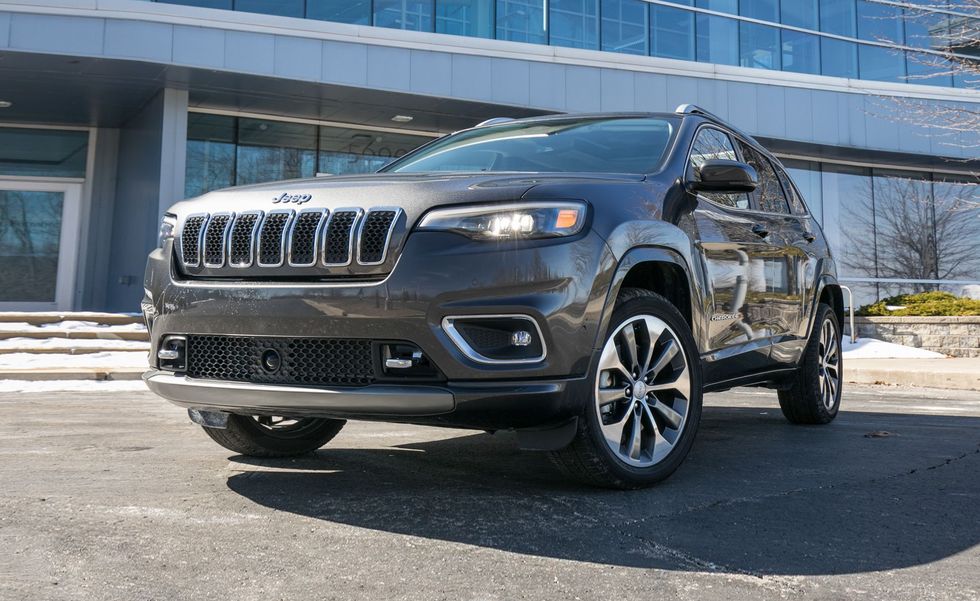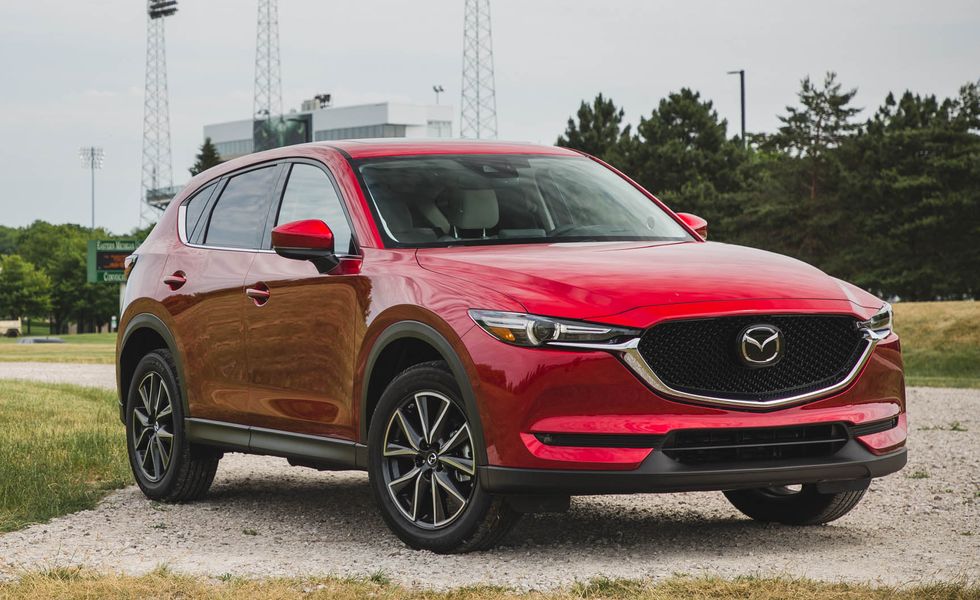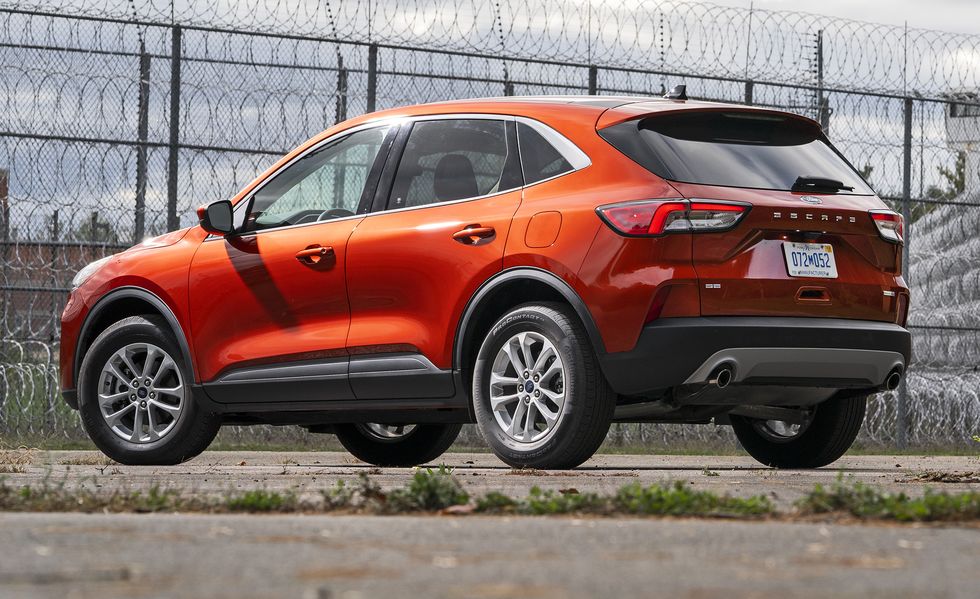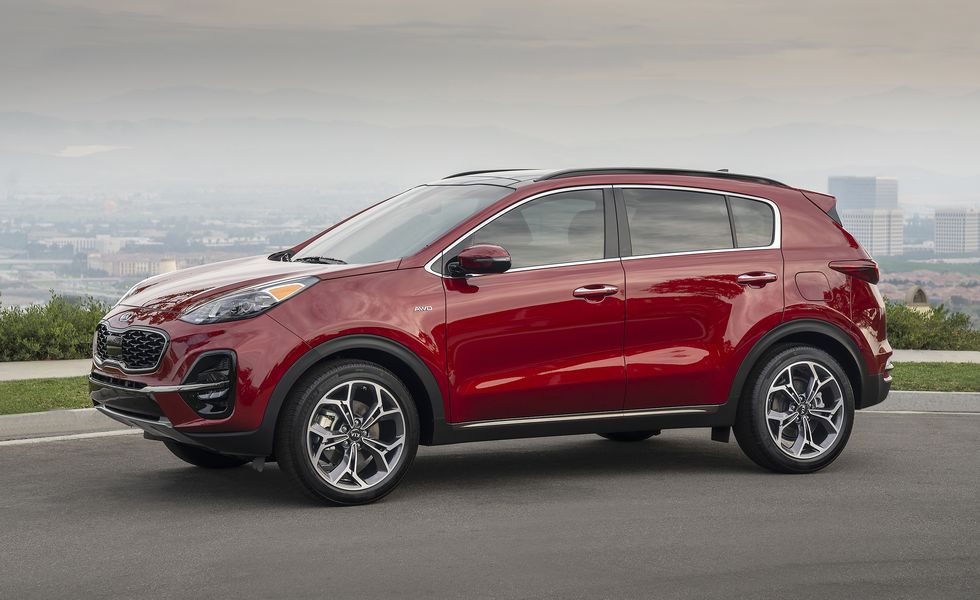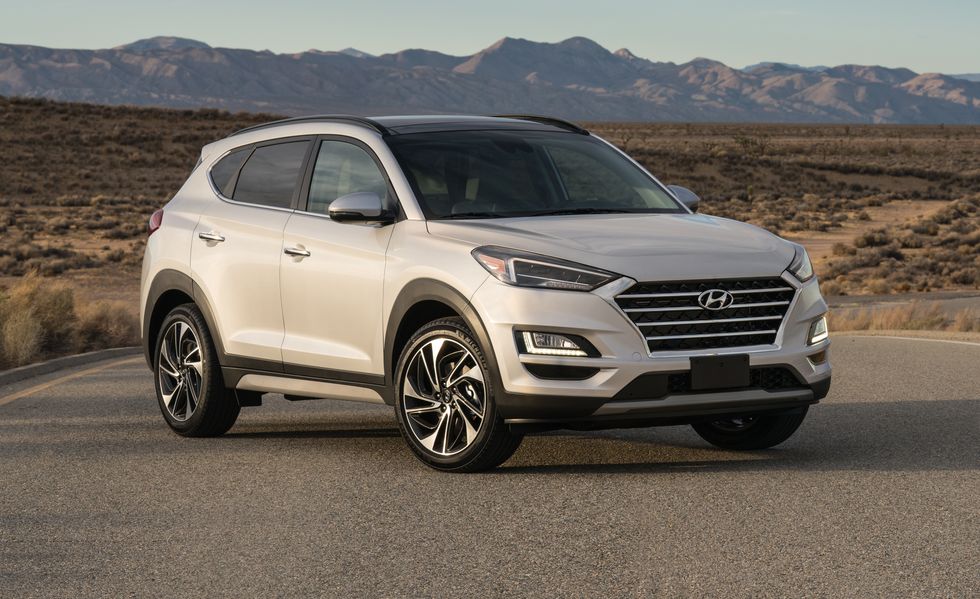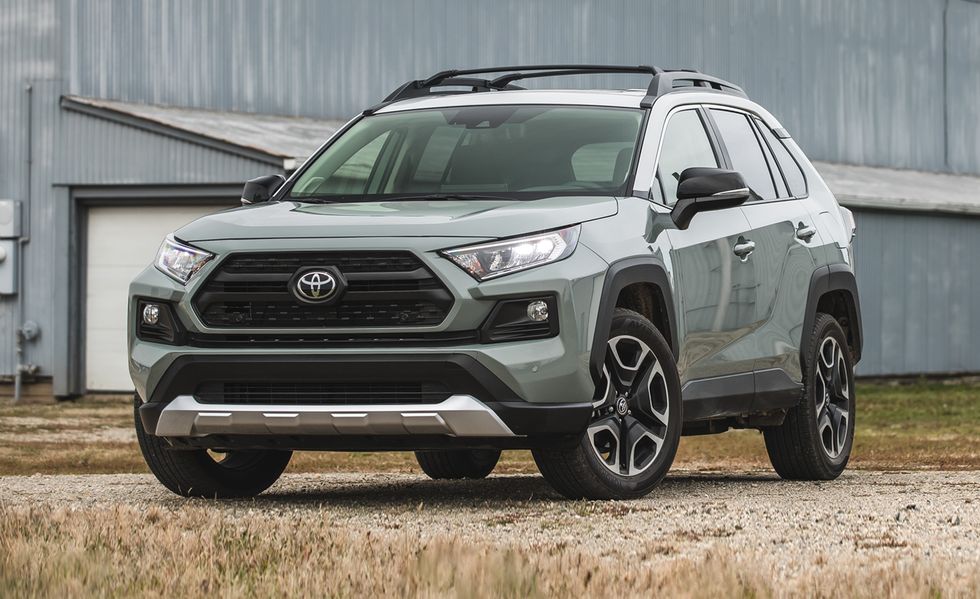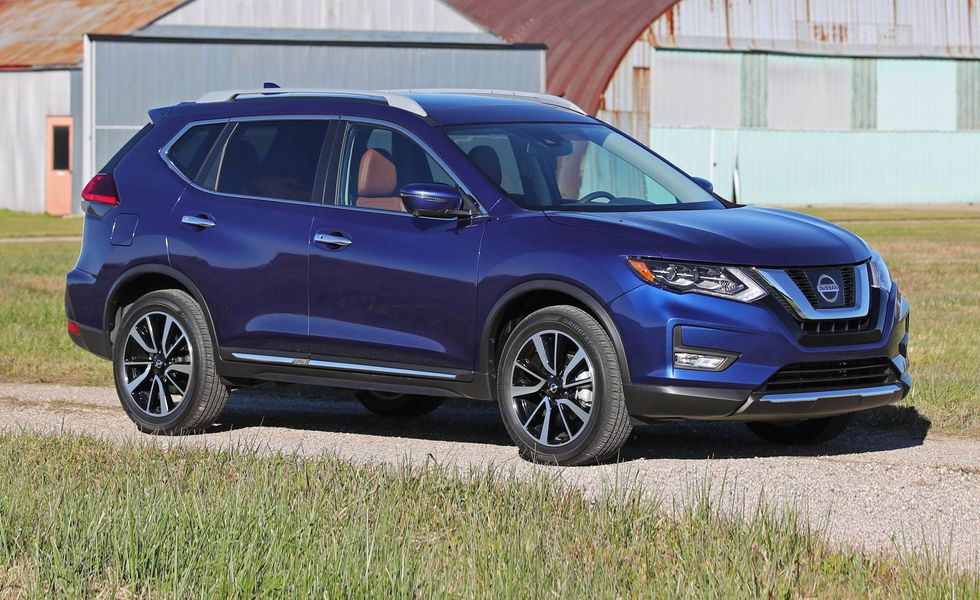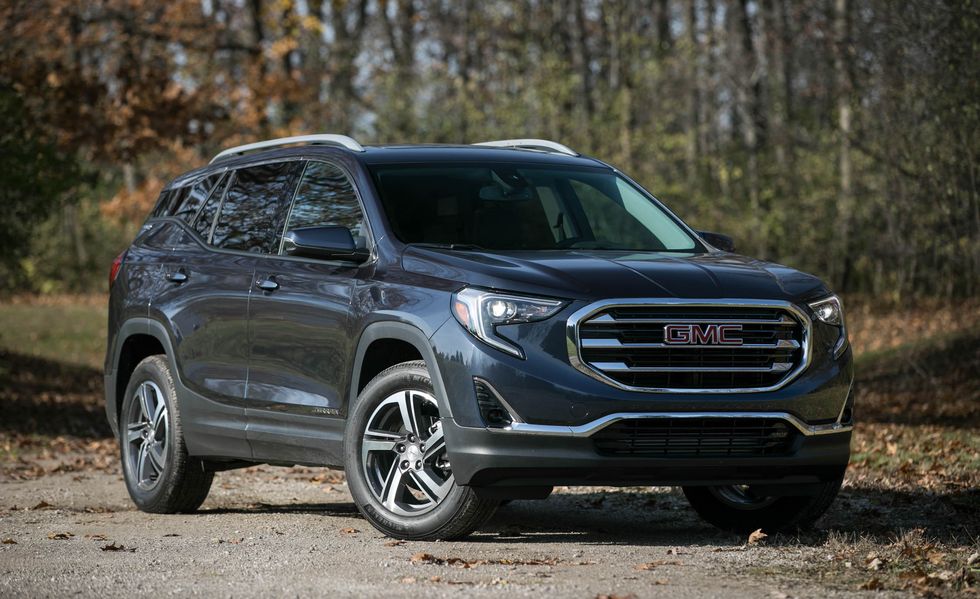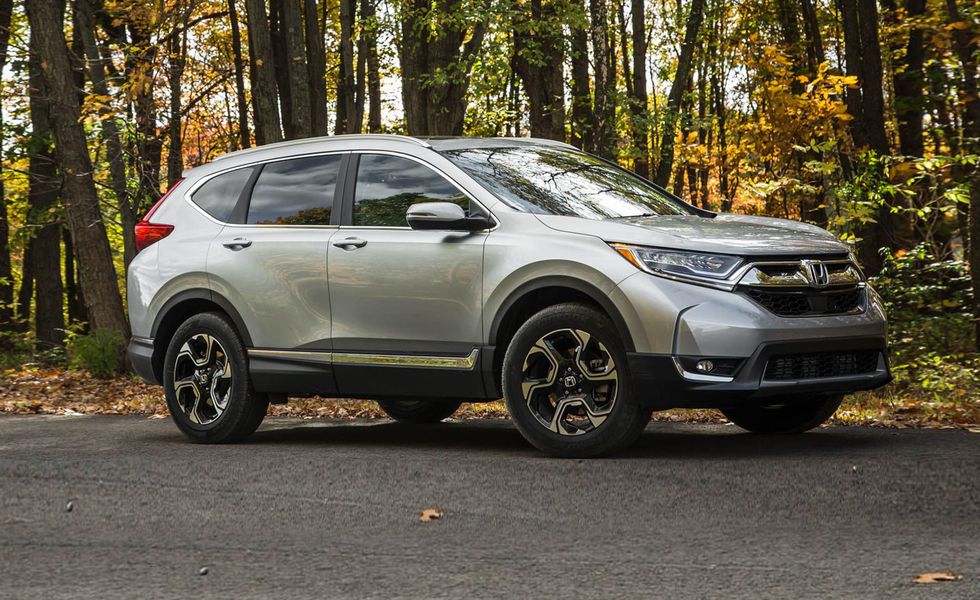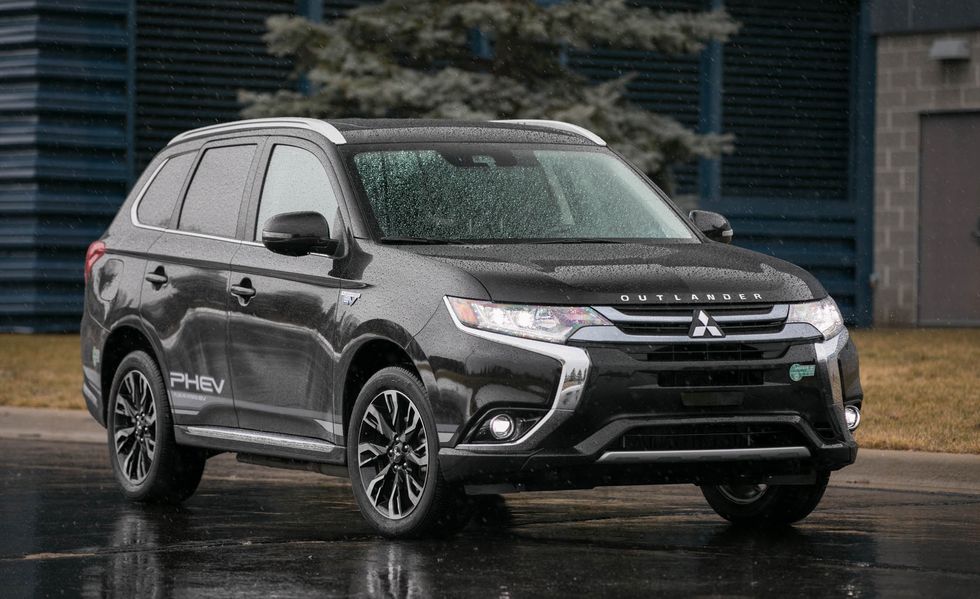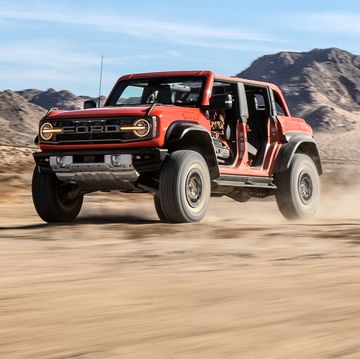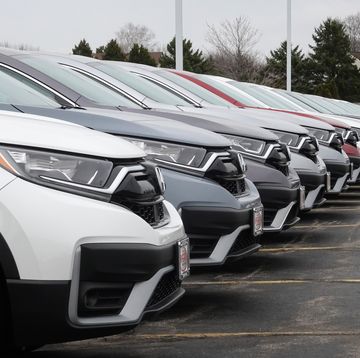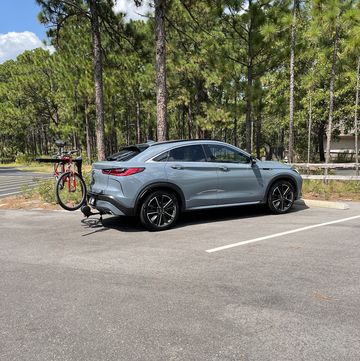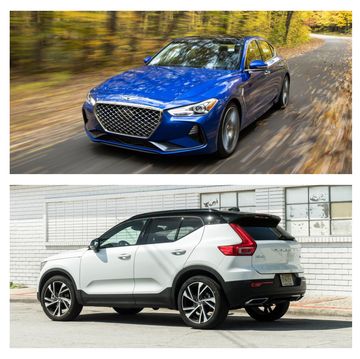Crossover SUVs With the Most Cargo Space
We rank the cargo capacities of today's compact crossovers in maximum cargo-hauling mode.
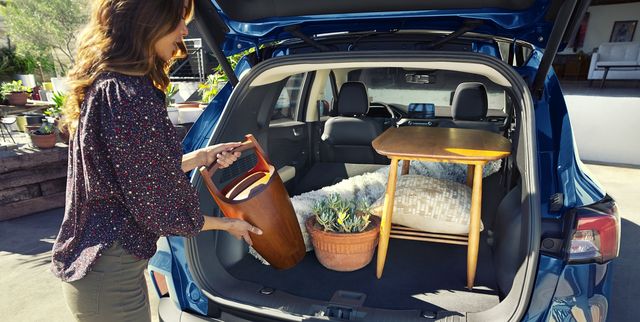
Can you visualize 50 cubic feet? Yeah, neither can we. That’s why we translate the storage and cargo space of the vehicles we test into more easily understandable units of measurement, like carry-on suitcases. Because if you’re taking a trip or making an airport run, you need to know how many regular ol’ roller bags a car can swallow, right? Right.
We’ve ranked the ultra-popular compact SUV class by how many carry-ons each one can hold in maximum-cargo mode, which means every row of seats but the front folded flat. (This levels the playing field among two- and three-row compact SUVs, since vehicles in the latter group usually hold less stuff behind their third rows than two-row models behind their second rows.) For any ties—say, two or more crossovers that fit the same number of carry-on bags—the manufacturer’s cargo volume (in cubic feet) with the rear rows of seats folded becomes the tiebreaker. By the way, a carry-on is roughly 1.4 cuft. Click through for our test results (for small crossover cargo rankings, click here):
Watch Next


Best SUVs of 2024 and 2025
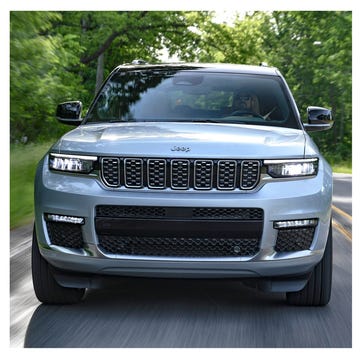
Every 3-Row Crossover and SUV Ranked

Safest 2024 and 2025 Crossovers and SUVs

Best SUVs of 2023
